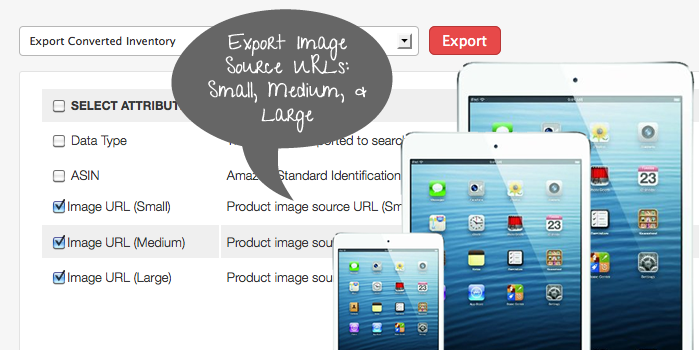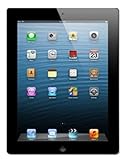
Retrieval of Amazon product image URLs is now available as an export option. Import your inventory file, convert it to collect product listing attributes, and export those attributes (including the image paths). Our system allows you to export the default thumbnail, medium, and large size URLs provided by Amazon. If you need a special size though, please contact us and let us know; we can create a custom add-on for your account which will generate the exact size you need. You can also manually modify the sizes yourself following the ‘Understanding Amazon Size Adjustments’ section in this article.
Downloading Amazon Images to your Local Computer in Bulk
In some instances, you may need more than just the image source path (url) to the Amazon listing, but the actual image file itself. This would be if you were using the images for off-line use, such as PDFs or other desktop applications. While our system currently does not support the retrieval of full image files, we do offer custom solutions that would allow you to actually download the Amazon images to your computer. Please contact us for more details if you require this.
Understanding Amazon Size Adjustments
If you’re using the product images for an affiliate, ecommerce, or any other web based application, you may find it helpful to understand the size adjustment capabilities that Amazon offers. Simply by extending the file name with a size request, you can control the size of the product in a dynamic fashion. This saves a lot of time and keeps things simple and consistent. (Note: Any sizes noted below are in pixels)
The Basic Image URL: http://ecx.images-amazon.com/images/I/41gtLiEuNdL.jpg
For each product image on Amazon, there is a unique file name. For instance, an Apple iPad has the file name “41gtLiEuNdL.jpg“. To call that image, you must use the full path listed above.
The image path above, also known as the image source URL, is the original sized image uploaded to Amazon by the first seller of that product. You can use that image path, however if you are collecting multiple images, you’re going to get random image dimensions for each product. To keep sizes consistent, you can extend the file name and request a size adjustment on Amazons server. Take a look below:
Added “._SX160_”: http://ecx.images-amazon.com/images/I/41gtLiEuNdL._SX160_.jpg
This reduces the image to be the listed number of pixels in width, with the height being reduced proportionately. See below…

Added “._SY160_”: http://ecx.images-amazon.com/images/I/41gtLiEuNdL._SY160_.jpg
This reduces the image to be the listed number of pixels in height, with the width being resized proportionately. See below…

Added “._SL160_”: http://ecx.images-amazon.com/images/I/41gtLiEuNdL._SL160_.jpg
This reduces the size of the image so that the larger dimension (width or height) becomes the size listed, with the smaller dimension reduced proportionately. If the value is larger than the larger dimension size that would otherwise be put out, this has no effect on the image. See below…

Added “._SS160_”: http://ecx.images-amazon.com/images/I/41gtLiEuNdL._SS160_.jpg
This re-sizes the image to a square image, a fixed number of pixels in both height and width. It does this not by distorting the image, but by scaling the image so that the larger dimension is the listed size and blank white pixels are added to the side to fill it out. If you set a value larger than the actual size of the source image as stored on the Amazon server, white space will be added all around the image. See below…

There are a number of other neat Amazon image features in addition to these – some which may be better controlled by HTML/HTML5 and CSS. We found a site that outlines a full list of those: http://aaugh.com/imageabuse.html/.

